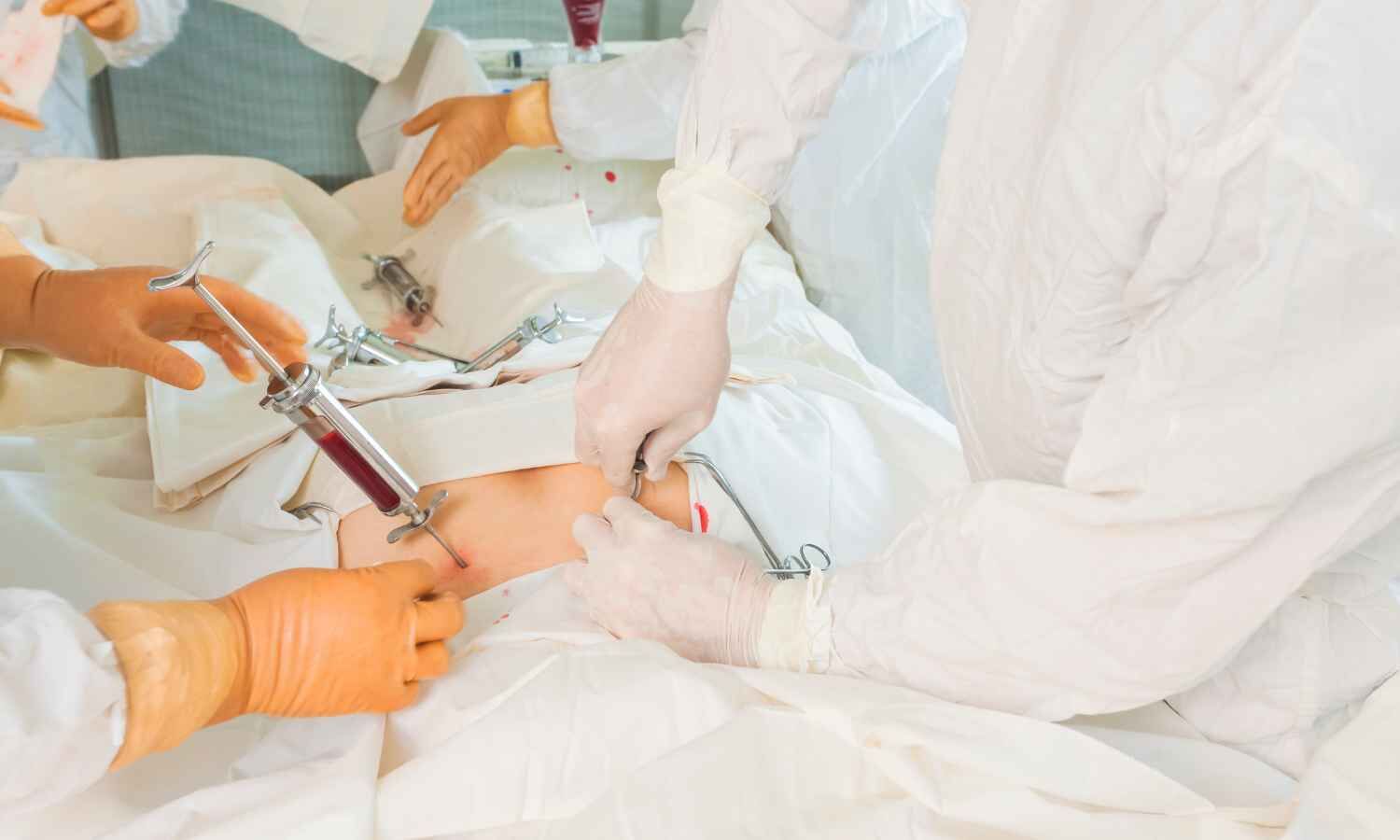Doctors could be missing a vital clue when it comes to young women and anxiety. Most of us know that iron deficiency causes anaemia, but iron is essential for more than just making blood. New research out of Baylor College of Medicine in Texas, USA, suggests that chronic low iron stores (sometimes called ferritin levels) could be leaving some girls with brains more susceptible to anxiety.1
The Texan brain scientists speculate in a JAMA network open article that iron is doing some of the heavy lifting when it comes to reshaping the adolescent brain. Low iron stores, or iron deficiency without anaemia, they say, could be behind rising rates of anxiety and depression in youngsters.1
The good news is, reminding your girls to pop a pharmacist approved daily iron pill will give their iron stores the boost they need to build a healthy brain.
Iron deficiency without anaemia is common in teen girls
Between the ages of 12 and 15, a girl’s daily iron requirement rockets from 8 mg a day to 15 mg. What’s more, cross-sectional analysis of US health records put the proportion of teen girls with an iron deficiency at around 40%. Only 6% of those girls were diagnosed with anaemia. 2
While growing boys and adult men can sometimes experience iron deficiency, periods supercharge a girl or woman’s need for ferrous foods. With unpredictable timing and often heavy flows, the first few years of menstruation can leave girls desperate for iron and not even knowing it.3
Even without anaemia, low iron levels can cause us problems. Almost every cell in the body stores at least some iron in a protein called ‘ferritin’. While 90% or our iron is used to make red blood cells, our bodies also use iron in some unexpected ways. Among many roles, we need iron to make insulin after we eat; it’s involved in programmed cell death; our immune system uses iron to fight off bacterial infections; we use it in our mitochondria and even to repair DNA.4 When our bodies don’t have enough iron, making red blood cells might not be the first function our body deprioritizes. Low iron stores can cause unpleasant physical symptoms, including a racing heart, intense fatigue and generally feeling ‘run down’.3
Brain scientists are now asking whether a lack of essential iron needed for brain building correlates to higher chances of developing anxiety. Could this hidden nutritional deficiency be preventing young brains from establishing the cognitive tools they need to handle their transition to adulthood?
Generation Anxiety
In their recently published research paper, the Baylor brain buffs, supervised by Professor Chadi Calarge, MD, report an intriguing link between iron deficiency without anaemia and adolescent brain development. They found that having low iron stores increased the likelihood that a girl would show signs of anxiety. Not only were girls with faulty ferritin levels more anxious, they also had a marked difference in the fledgling areas of the brain that handle emotion and decision making.1 While it’s easy to blame rising rates of anxiety in girls on social media and changes in women’s gender roles, are we overlooking something far closer to home? Could reducing the prevalence of anxiety in teen girls be as simple as ensuring our daughters get enough iron in their diet?
To test their hypothesis that iron deficiency might be linked to anxiety in teens and young women, the brain scientists designed carefully controlled experiments. They used advanced brain imaging techniques, in depth psychological testing and precision blood iron measurements to test the connections between iron stores, brain development and anxiety.1
First, they compared teen brain scans to see whether brains with low iron stores had unusual features. Next, they probed the association between brain structure and anxiety. Finally, they checked whether there was a link between iron deficiency without anaemia and anxiety.1 Was iron deficiency without anaemia sufficient to deplete iron stores in adolescent brains?
Brain Buffs
The researchers recruited 209 Texas teens aged 10 to 17 from a large network of local paediatric clinics. Of the 209, 122 were girls and 87 were boys. Just over half were black or Hispanic, reflecting the demographic make-up of the area. Teens with and without an unmedicated anxiety or depression diagnosis were invited but kids with a history of anaemia, brain abnormalities, pregnancy or chronic illnesses other than unmedicated anxiety/depression were excluded.1 This helped the doctors to make comparisons between the brains more easily without getting side tracked.
To start off, the researchers used MRI scans to look at iron levels in the basal ganglia region of the brain.1 This part of the brain helps us to control emotion, motivation, and decision-making.5
These specialized MRI scans can visualize how much iron there is in the cells of the brain by measuring how magnetic the cells are compared to surrounding tissue. Cells that are more magnetic contain more iron. Next, the researchers measured the volume of the brains and tested whether the amount of iron in the basal ganglia was related to brain size. They found that brains with less iron stored in key emotion controlling areas, such as the caudate and putamen, were actually larger than in teens with healthy iron levels – especially in girls.1 Bigger brain size might sound like a good thing, but in this case, it likely reflects a problem. During puberty, the brain is growing, but it’s also editing. With so many new experiences and physical changes taking place, brains have to do some serious synaptic pruning to make sure the connections between different parts of the brain stay fast and efficient.6
Could the lack of iron stored in the caudate and putamen prevent the brain from whittling down needless neurons? The brain researchers speculated that the longer a teen brain is deprived of iron, the less effective it could be at pruning unnecessary connections. This could be a reasonable guess given that the kids with the biggest brain size disparity were the girls aged over 17.1
Girls who had been menstruating for longer and using up their iron were more likely to have less iron in their brain and a larger brain volume. The longer the deficiency lasted, the bigger these changes became, suggesting a snowball effect over time.
Iron, Answers and Anxiety
The next step was to test whether low iron stores in the emotional control area of the brain was linked to mental health. The researchers, who are specialists in child and adolescent psychiatry, put the teens through detailed interviews and questionnaires to assess their mental health. Kids were scored on their levels of anxiety and depression. When they tallied up the scores and compared them to the brain scans, they got a clear result. Teens with low iron stores in their brains and bigger brain volume were more likely to have symptoms of anxiety, but not depression.1
Finally it was time for the big question. Who had the least amount of iron in their brain? Was it kids with normal iron stores, kids with iron deficiency without anaemia or were iron stores in the brain unrelated to ferritin levels in the blood? The doctors drew blood from each of the participants and sent it to the lab. Technicians measured how much iron was present in each sample. Well, you could say it was almost a ‘no brainer’. The team found that, as expected, nearly a third of the kids had iron deficiency without anaemia. About three quarters of them were girls, lining up with the numbers researchers find in the general adolescent population.1 When they matched the brain scans to the ferritin measurements, the kids with the lowest iron in their blood also had the least iron in their brains. The kids with normal blood ferritin levels were less likely to have low iron stores in their basal ganglia.
What’s Going On in Your Head?
Overall, the brain scientists discovered that girls with less iron stored in their brain were more likely to have symptoms of anxiety and, on average, had bigger brains. Low iron stores did not always come with anxiety, but there was a correlation. There was no link to depression. The results for boys were less clear. This isn’t surprising because boys are far less likely to have an iron deficiency, so the sample size was too small to draw conclusions from. 1
Is there a direct relationship between iron deficiency without anaemia and anxiety? The researchers can’t give a definitive answer yet, but right now their theory goes something like this:
The brain’s ‘wiring crew’ uses tools made out of iron to reorganize, reroute and rebundle our neural wiring. If there isn’t enough iron in our bloodstream, our neural electricians might start cutting corners – but not always right away. In some teens, this shortage disrupts pruning, brain regions grow too large, and emotional symptoms follow. In others, the brain manages to cope, maybe they tell the bacteria fighting immune cells or other iron using processes to hand over their supplies. In short, low ferritin levels seem to set off a chain reaction – less brain iron, bigger brain structures, and then more emotional symptoms.
One aspect that we don’t see the researchers address is that the physical symptoms of low iron stores often mimic the physical symptoms of anxiety–clammy hands, fast heart rate, feeling lightheaded, etc.
Supplement and Screen Before Anaemia Attacks!
What does this research mean for real people? In short, set your girls up for success by making sure they are getting enough iron. Whether iron deficiency without anaemia makes a brain more prone to anxiety, or the unpleasant symptoms of iron deficiency without anaemia make life more difficult, the answer remains: get more iron.
Teens and their parents can’t control how the brain prunes its wiring during puberty, but we can make sure our brain has the materials it needs for the job. Getting enough iron through a diet rich in red meat, poultry, dark green leafy vegetables or legumes will keep your girls healthy and might reduce the risk of emotional struggles down the road.7
This is particularly important for girls who don’t eat meat.
How Do I Know If I Have Iron Deficiency Without Anaemia?
Iron deficiency without anaemia happens when your body’s iron stores are low, but your haemoglobin levels remain in the normal range of 130–170 g/L for males and 120–150 g/L for females.8, 9. Unlike haemoglobin, which measures iron already in use by red blood cells, ferritin shows how much iron the body has in storage for other purposes. That’s why low ferritin can indicate iron deficiency before anaemia even develops. Routine tests often focus on anaemia (low haemoglobin), so it’s difficult to say how common low ferritin levels are, and what symptoms follow.10
Symptoms of low iron stores are also incredibly common, but their root cause is often overlooked because their haemoglobin levels are normal. Patients can experience intense fatigue, faster-than-normal heartbeats, and brain fog, among other symptoms.11 To confuse matters further, there is debate on how to define this kind of iron deficiency, although the World Health Organisation classifies it as a blood ferritin concentration of less than 15 ng/mL.12
If your teen is complaining about fatigue or having trouble focusing, a blood test and iron supplements might be the answer. It’s time to stop waiting for anaemia and iron out this issue now!
References
- Fiani D, Kim JW, Hu M, et al. Iron deficiency without anaemia and reduced basal ganglia iron content in youths. JAMA Network Open. 2025;8(6):e2516687. doi:10.1001/jamanetworkopen.2025.16687
- Weyand AC, Chaitoff A, Freed GL, Sholzberg M, Choi SW, McGann PT. Prevalence of Iron Deficiency and Iron-Deficiency anaemia in US females aged 12–21 years, 2003–2020. JAMA. 2023;329(24):2191. doi:10.1001/jama.2023.8020
- Wang W, Bourgeois T, Klima J, Berlan ED, Fischer AN, O’Brien SH. Iron deficiency and fatigue in adolescent females with heavy menstrual bleeding. Haemophilia. 2012;19(2):225-230. doi:10.1111/hae.12046
- Teh MR, Armitage AE, Drakesmith H. Why cells need iron: a compendium of iron utilisation. Trends in Endocrinology and Metabolism. Published online May 1, 2024. doi:10.1016/j.tem.2024.04.015
- Pierce JE, Péron J. The basal ganglia and the cerebellum in human emotion. Social Cognitive and Affective Neuroscience. 2020;15(5):599–613. doi:10.1093/scan/nsaa076
- Spear LP. Adolescent Neurodevelopment. Journal of Adolescent Health. 2013;52(2):S7-S13. doi:10.1016/j.jadohealth.2012.05.006
- Bda. Iron. British Dietetic Association. https://www.bda.uk.com/resource/iron-rich-foods-iron-deficiency.html
- Balendran S, Forsyth C. Non-anaemic iron deficiency. Australian Prescriber. 2021;44(6):193-196. doi:10.18773/austprescr.2021.052
- Haemoglobin | North Bristol NHS Trust. https://www.nbt.nhs.uk/severn-pathology/requesting/test-information/haemoglobin
- Freeman AM, Zubair M. Anemia screening. StatPearls – NCBI Bookshelf. Published February 17, 2025. https://www.ncbi.nlm.nih.gov/books/NBK499905/
- Iron deficiency anaemia. HSE.ie. https://www2.hse.ie/conditions/iron-deficiency-anaemia/
- Guidelines Review Committee. WHO guideline on use of ferritin concentrations to assess iron status in individuals and populations. Published April 21, 2020. https://www.who.int/publications/i/item/9789240000124










